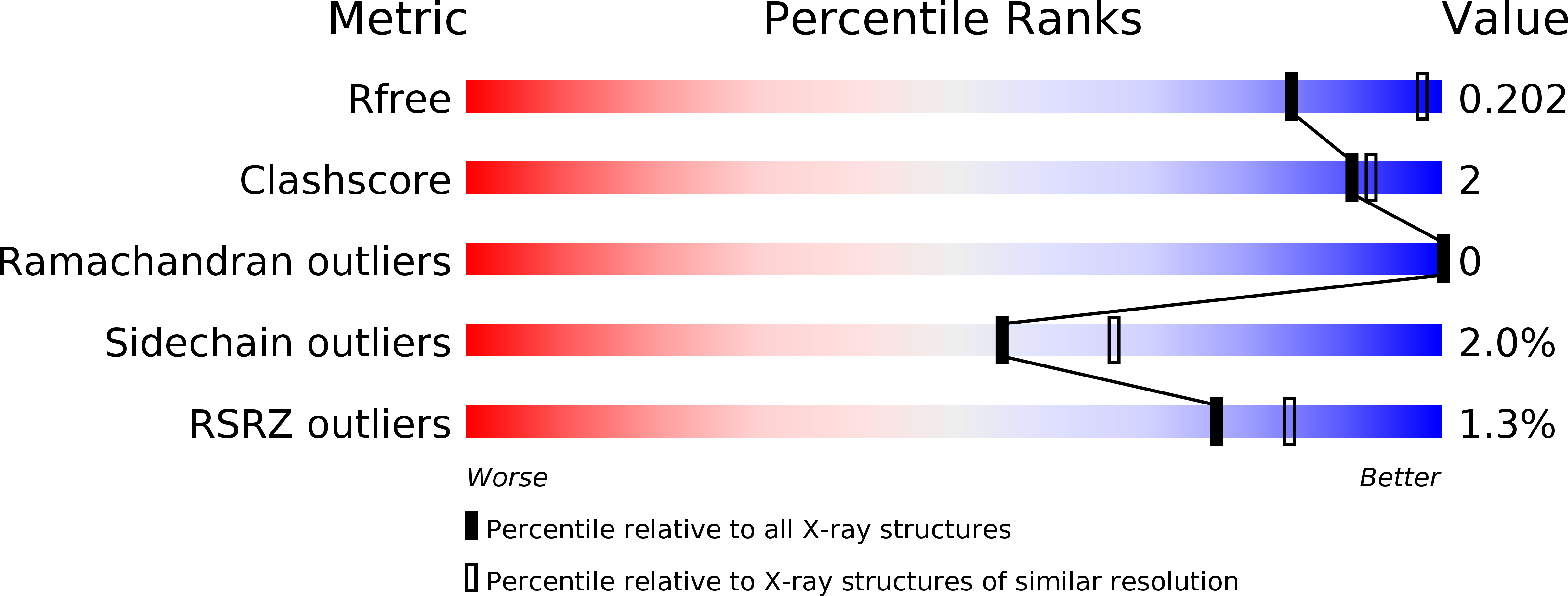Structural insights into the catalysis and substrate specificity of cyanobacterial aspartate racemase McyF.
Cao, D.D., Zhang, C.P., Zhou, K., Jiang, Y.L., Tan, X.F., Xie, J., Ren, Y.M., Chen, Y., Zhou, C.Z., Hou, W.T.(2019) Biochem Biophys Res Commun 514: 1108-1114
- PubMed: 31101340
- DOI: https://doi.org/10.1016/j.bbrc.2019.05.063
- Primary Citation of Related Structures:
5WXX, 5WXY, 5WXZ - PubMed Abstract:
L-amino acids represent the most common amino acid form, most notably as protein residues, whereas D-amino acids, despite their rare occurrence, play significant roles in many biological processes. Amino acid racemases are enzymes that catalyze the interconversion of L- and/or D-amino acids. McyF is a pyridoxal 5'-phosphate (PLP) independent amino acid racemase that produces the substrate D-aspartate for the biosynthesis of microcystin in the cyanobacterium Microcystis aeruginosa PCC7806. Here we report the crystal structures of McyF in complex with citrate, L-Asp and D-Asp at 2.35, 2.63 and 2.80 Å, respectively. Structural analyses indicate that McyF and homologs possess highly conserved residues involved in substrate binding and catalysis. In addition, residues Cys87 and Cys195 were clearly assigned to the key catalytic residues of "two bases" that deprotonate D-Asp and L-Asp in a reaction independent of PLP. Further site-directed mutagenesis combined with enzymatic assays revealed that Glu197 also participates in the catalytic reaction. In addition, activity assays proved that McyF could also catalyze the interconversion of L-MeAsp between D-MeAsp, the precursor of another microcystin isoform. These findings provide structural insights into the catalytic mechanism of aspartate racemase and microcystin biosynthesis.
Organizational Affiliation:
Hefei National Laboratory for Physical Sciences at the Microscale and School of Life Sciences, University of Science and Technology of China, Hefei Anhui 230027, China.
















